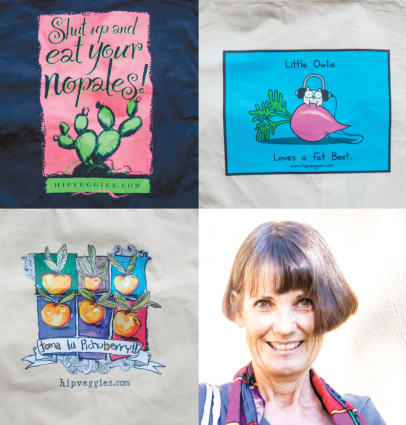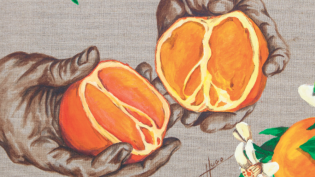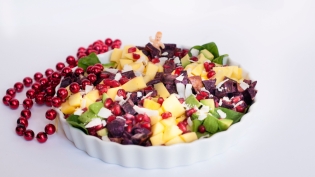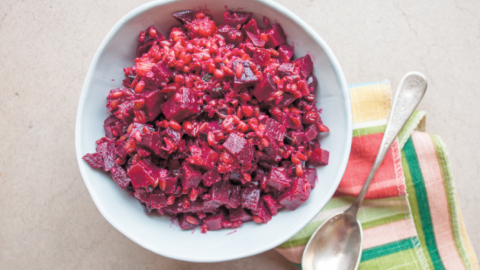Making Veggies Hip
Monika Woolsey was frustrated. Throughout her career as a registered dietitian, she'd worked with people to help change their attitudes toward food: to eat more or less of certain items, and to consider eating a vegetable along with their burger and fries. She'd tried just about every trick in her dietitian's toolbox to persuade people to eat more fruits and vegetables, but with very limited results.
Monika was convinced that people know fruits and vegetables are good for them. Who doesn't know that! So why aren't they buying them? Cooking them? Eating them? Ordering them in restaurants?
The problem, Monika suspected, was that people had very limited experience with vegetables and most of those experiences were less than stellar. Overcooked mushy green beans don't make for a love affair with vegetables. Your mother telling you not to leave the table until you've finished your carrots doesn't make you long for them in adulthood.
Monika had observed shoppers at the farmers' market ogling beautifully colorful, but less familiar, vegetables. They might glance at a bunch of vibrantly green kale or deeply purple cauliflower or yellow raspberries and then walk past them to buy more familiar green beans. There's nothing wrong with green beans. In fact, there's a lot right with them. But to be truly healthy, people need to eat a wide variety of fruits and veggies.
Monika is an accomplished problem solver but the challenge to get people to eat healthier had her stymied.
She realized that one of the problems might be that people just don't know what to do with unusual fruits and vegetables once they get them home. How do you clean them? Can they be eaten raw? Do they have to be peeled? Do you stir-fry or roast or steam them? And what will they taste like? Do red beets taste like yellow ones? Do deeply purple tomatoes taste the same as red ones? How do you get people to try new foods?
While quietly pondering these issues at a downtown art gallery one day last year, Monika noticed that much of the art work she was looking at included vividly colored vegetables. It suddenly occurred to her that the visual arts could be used to promote the consumption of fruits and vegetables.
But how? People see brightly colorful fruits and veggies all the time in magazines and on television but that doesn't seem to persuade them to eat them. Whatever her approach, she knew it had to be an integrated campaign. A pretty still-life painting wasn't going to change anyone's mind about eating a plateful of broccoli.
She thought about combining the skills of the artists with her expertise as a nutrition professional to promote fruit and vegetable consumption. But how could she best utilize their talents to get across her point of view?
"I realized that these artists, whose rich portrayals I admired, were a whole team of spokespeople at my disposal," says Monika.
She hit on the idea to have the artists paint vegetables and fruits to decorate reusable canvas shopping bags – bags that could be used to carry home the fruits and vegetables that people would buy. In each bag, Monika would place a brochure describing the produce and ways to use it in cooking. And so Hip Veggies was born.
Every artist to whom Monika pitched her idea of creating canvas shopping bags featuring their food artwork agreed to the project immediately. To sweeten the pot a little, she offered to donate one-third of the profits from each bag to a charity of the artist's choice.
The first Hip Veggies bag featured beets and "Little Owlie," a charming cartoon character created by artist Sebastien Millon, whose charitable donation went to Free Arts Arizona.
Monika organized a launch party to introduce Hip Veggies and Little Owlie to the public. Since her intention was not just to promote the bag but to get people to try beets, she set out to create a smorgasbord of beet delights to serve at the party. After weeks of working with beets, her kitchen (and hands) looked like the set of a Quentin Tarantino movie, but in the process she came up with unique ways to showcase both cooked and raw beets.
The party and the bags were a huge success. People bought the $20 Little Owlie bags, tried beet dishes that ranged from beverages to appetizers to desserts, and left the party with a new appreciation for the versatility of beets.
Armed with the success of beets, Monika moved on to nopales, the pads (cleaned of stickers, of course) of the prickly pear cactus. Although ubiquitous in the Southwest desert landscape and a staple in the Mexican kitchen, nopales are a pretty much underutilized local vegetable. Although they're a source of vitamin C and calcium and other important nutrients and available in local markets (as well as in your front yard if you have a cactus garden), nopales can be a little intimidating to the uninitiated.
"I've always liked nopales. I don't understand why tourists don't come here with eating nopales on their to-do list the way visitors to New Orleans do with gumbo or Boston with lobster. Maybe the nopales bag will change that," says Monika.
The nopales bag (emblazoned "Shut up and eat your nopales") was designed by local artist Joe Ray, who chose Desert Mission Food Bank as his charity.
Monika scoured the Mexican markets for fresh nopales and worked for weeks creating recipes for the launch party. Another successful event.
Although Hip Veggies is a for-profit business, the model has included charitable donations and community involvement from its inception. And it's the community involvement piece that led to the creation of the third bag, Pichuberries (aka Cape Gooseberries).
The Pichuberry, native to the Andes, is a relatively unknown fruit here in the United States (soon to change now that farmers are preparing to grow Pichuberries in southern Arizona). That is, until Monika decided to profile it on the third bag.
Gennaro Garcia, one of the artists who had offered to design a bag, had the idea to involve students at Cesar Chavez Community School in designing the Pichuberry bag. Monika and Gennaro worked with a group of Chavez students on the design of the bag. As part of the project, Monika brought the students to Co+Hoots, a creative co-working office space in downtown Phoenix. There the students were treated to workshops on business development and marketing by some of the experts who work at Co+Hoots.
This was a true community activity that benefitted the students in ways that will be evident as they grow into adults because they learned about creating a product and how to take that product to market. Proceeds from the sale of the bag they crafted will benefit their school financially. Oh, and they've added a new fruit to their diet: the Pichuberry.
The most important factor to the success of Hip Veggies (besides Monika's dogged belief in the business) is the willingness of a cadre of talented people to jump on the fruit and veggie bandwagon Monika has created. Many Valley food producers and venues have contributed to the bag launch party events. Artists have already signed on to create art for the next year and beyond.
Monika sees Hip Veggies as a win-win for everyone from local farmers to restaurateurs to local artists to anyone who ends up eating more fruits and vegetables. "If people realize they like beets – not the kind they were served in the school cafeteria but freshly picked local beets – then they'll possibly order beets in a restaurant. If so, then local chefs will buy more beets from local farmers. Everyone wins!"
"I am especially delighted that it's rare for a day to go by anymore without a post on my Facebook page from someone who has acted on our outreach. For example, one friend convinced his corporate cafeteria at American Express to start offering nopales! I may be the only person out there who gets random texts of vegetable pictures from friends who see items while eating out that they think may be of interest to the group."
And that's how Monika measures success. She just wants you to eat your fruits and veggies. Have you had your beet Martini or nopales posole or Pichuberry fattoush today?
For more information, "like" Hip Veggies on Facebook.
Read the related story about Hip Veggie's current project with Hugo Medina (on left rail).










